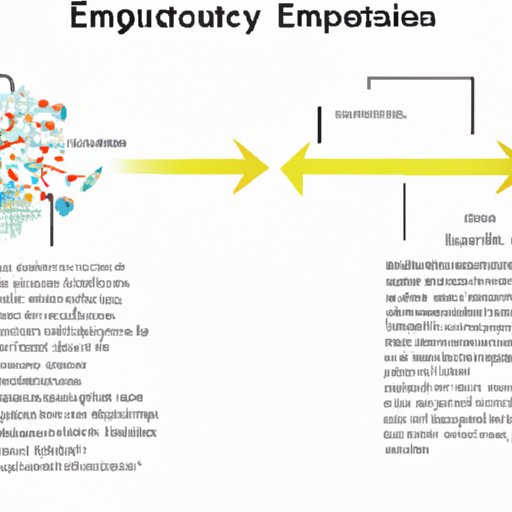Introduction
Enzymes are proteins that act as catalysts in biochemical processes. They speed up the rate of a reaction without being used up or changed in the process. Enzymes exist in all living organisms, and they are essential for life. Without them, many of the metabolic processes that enable us to survive would not be possible.

Explaining Enzyme Function Through a Case Study
In order to understand how enzymes work, it is helpful to look at a specific example of an enzyme-catalyzed breakdown process. For instance, consider the breakdown of sucrose (common table sugar) into glucose and fructose. The enzyme that catalyses this process is known as sucrase. This enzyme works by binding to the sucrose molecule and breaking the glycosidic bond that holds the two monosaccharides together. The result is two separate molecules of glucose and fructose.
Examining the Role of Enzymes in Metabolism
Enzymes play a vital role in metabolism, which is the set of biochemical processes that occur in cells to convert nutrients into energy. Most metabolic pathways involve multiple steps, each of which is catalysed by a specific enzyme. Without these enzymes, the metabolic pathways would be too slow to sustain life.
Enzymes also control the rate at which energy is produced. For example, in respiration, oxygen is used to break down glucose and release energy. The rate at which this process occurs is determined by the activity of the enzyme responsible for the reaction.

Comparing Enzymes to Chemical Catalysts
Enzymes are similar to other types of chemical catalysts in that they lower the activation energy required for a chemical reaction to take place. However, there are some important differences. Enzymes are highly specific and can only catalyse certain reactions. In contrast, chemical catalysts can be used to catalyse a wide range of reactions.
Enzymes are also more efficient than chemical catalysts. This is because enzymes have an active site where the substrate binds, allowing the enzyme to focus its energy on speeding up the reaction. Chemical catalysts do not have an active site and must rely on random collisions to produce a reaction.

Identifying How Enzymes are Activated and Inhibited
Enzymes can be activated or inhibited depending on environmental factors. Temperature, pH, and the concentration of reactants and products can all affect enzyme activity. For example, if the temperature is too high or too low, the enzyme will become denatured and unable to catalyse the reaction.
Enzymes can also be inhibited by the presence of certain molecules. These molecules bind to the enzyme’s active site, preventing the substrate from binding and thus inhibiting the enzyme’s activity. An example of this is the inhibition of the enzyme chymotrypsin by the drug trasylol.
Exploring the Relationship Between Enzymes and Substrates
The interaction between enzymes and substrates is key to understanding enzyme function. Enzymes have an active site where the substrate binds and undergoes the reaction. The shape of the active site is specific to the type of reaction it catalyses, so it will only bind to the appropriate substrate.
Once the substrate binds to the active site, the enzyme undergoes a conformational change that causes the substrate to be broken down into its component parts. This process is known as catalysis and is essential for many metabolic processes.
Conclusion
Enzymes are proteins that act as catalysts in biochemical processes, speeding up the rate of a reaction without being used up or changed in the process. They are essential for life, as they control the rate at which energy is produced and enable metabolic pathways to take place. Enzymes are specific to certain reactions and are more efficient than chemical catalysts due to their active sites.
Enzymes can be activated or inhibited depending on environmental factors and the presence of certain molecules. Their interaction with substrates is key to their function, as the active site allows the substrate to bind and undergo the reaction. Overall, enzymes are essential for life and an understanding of their function is essential for any biologist.
(Note: Is this article not meeting your expectations? Do you have knowledge or insights to share? Unlock new opportunities and expand your reach by joining our authors team. Click Registration to join us and share your expertise with our readers.)
